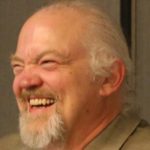In 2019, SNIA On Storage is partnering with the SNIA Technical Council Co-Chairs Bill Martin and Mark Carlson to chat about SNIA technical activities. In this blog, we chat with Mark on the catalysts for new SNIA work. SNIA also invites you to check out our event calendar to meet SNIA in person across the globe in the next months.
SNIA On Storage (SOS): A new year always brings new ideas, and I’m sure SNIA has some exciting activities planned for 2019. But just how are new SNIA efforts created?
 Mark Carlson (MC): SNIA does not just sit back and dream up work to do, but rather relies on industry input and requirements. A great example of how SNIA work is created is the 2018 launch of the Computational Storage Technical Work Group (TWG). It all started at the Flash Memory Summit industry event with a simple Birds-of-a-Feather on a thing called “computational storage”. Interest definitely was high – the room was packed – and the individuals assembled decided to use SNIA as the vehicle to do definition and standardization of this new concept.
Mark Carlson (MC): SNIA does not just sit back and dream up work to do, but rather relies on industry input and requirements. A great example of how SNIA work is created is the 2018 launch of the Computational Storage Technical Work Group (TWG). It all started at the Flash Memory Summit industry event with a simple Birds-of-a-Feather on a thing called “computational storage”. Interest definitely was high – the room was packed – and the individuals assembled decided to use SNIA as the vehicle to do definition and standardization of this new concept.
SOS: What made them choose SNIA?
MC: The industry views SNIA as a place where they can come to get agreement on technical issues. SNIA is committed to developing and promoting standards in the broad and complex fields of digital storage and information management to allow solutions to be more easily produced. Technical Work Groups (TWGs) are collaborative technical groups within the SNIA that work on specific areas of technology development.
In the case of computational storage, it was clear that the industry saw SNIA as a catalyst to get things off and running with computational storage in the standards world because…six months after FMS we have a new Technical Work Group with 90 individuals from 30 member companies starting their work and evangelizing computational storage at events like March’s OCP Summit.
SOS: What are some of the changing storage industry trends that might create a need for new SNIA efforts?
MC: We see some exciting activity in the areas of composable infrastructure, next generation fabrics, and new data center innovations. Standard computer architectures in data centers today are essentially servers acting as the building blocks for assembling data center sized solutions. But imagine if CPUs, memory, storage, and networks were individual components on next generation fabrics, making more granular building blocks. The definition then of what a server is would be an assemblage on the fly of these components. Scalability of any individual platform instance would become a matter of combining sufficient components for the task.
SOS: What role would SNIA play?
MC: Composable infrastructure will now need to be managed in a different way than when using servers as a building block. Rather than having a single point of management for multiple components in a box, management now needs to be component-based and handled by the components themselves. Redfish from the DMTF is already architected for this very issue of scale out and SNIA’s Swordfish is continuing to extend this into storage architectures.
SNIA is already a pioneer in the area of storage management, and anticipating this coming possible disruption by moving its standards to modern protocols with alliance partners like DMTF and NVM Express. DMTF Redfish and SNIA Swordfish are examples of this work where Object Drive and other work items create a Redfish profile for NVMe drives. NVMe drives will be a storage component and a peer of the CPU either attached to the host or not attached and outside the box.
Next generation fabrics are enabling these composable infrastructures, making new data center innovation possible. But the new fabrics themselves need to be managed as well.
SOS: Where can folks learn about these activities in person?
MC: Check out the Computational Storage Birds-of-a-Feather at USENIX FAST this week. In March, SNIA will present Persistent Memory, including a PM Programming Tutorial and Hackathon at the Non Volatile Memory Workshop at UC San Diego; Computational Storage presentations at OCP Summit; and NVM alliance activities at NVM Annual Members Meeting and Developer Day.
SOS: Exciting news indeed! Thanks, Mark, and we’ll look forward to seeing SNIA at upcoming events.